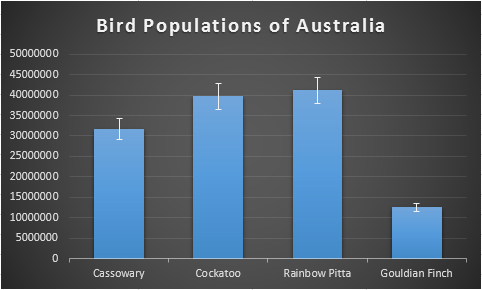

The SD can still be interpreted without assuming a Gaussian distribution. This graph points out that interpreting the mean and SD the usual way can be misleading if you assume the data are Gaussian, but that assumption isn't true.

The other two samples are far from Gaussian yet have precisely the same mean (100) and standard deviation (35). The sample on the left is approximately Gaussian. The figure below shows three sets of data, all with exactly the same mean and SD.
#Mean with standard deviation in excel graph bar graph how to
How to interpret the SD when the data are not Gaussian The graph on the right shows that about 95% of values lie within two standard deviations of the mean. The green area is about 68% of the total area, so a bit more than two thirds of the values are in the interval mean plus or minus one SD. In the graph on the left, the green (shaded) portion extends from one SD below the mean to one SD above the mean. The area under a probability distribution represents the entire population, so the area under a portion of a probability distribution represents a fraction of the population. The graph that follows shows the relationship between the standard deviation and a Gaussian distribution. The dotted lines are drawn at the mean plus or minus two standard deviations, and about 95% of the values lie within those limits. The shaded area covers plus or minus one SD from the mean, and includes about two-thirds of the values.

This figure shows 250 values sampled from a Gaussian distribution. If the data are sampled from a Gaussian distribution, then you expect 68% of the values to lie within one SD of the mean and 95% to lie within two SD of the mean. How to interpret the SD when the data are Gaussian The standard deviation (SD) quantifies variability or scatter, and it is expressed in the same units as your data.


 0 kommentar(er)
0 kommentar(er)
